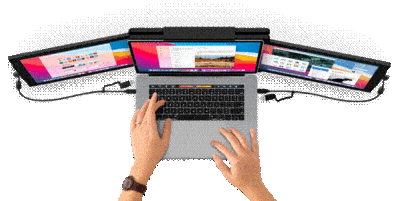Have you any quarry about how far can a drone fly? There are several restrictions on flying a drone. Now come with me to know everything about the details of flying a drone. We will delve into the restrictions, guidelines, maintenance procedures, etc throughout this article.
The General Rules Of How Far Can You Fly A Drone:
As a general rule, we should fly a drone within our visible line of sight, which is around 500 meters or 1640 feet from the controller. Additionally, there are regulations in particular regions or countries that limit the maximum range of drones. It depends on their make, weight, model, controller type, intended use, etc.
Additional equipment may be added to the drone, such as a GPS tracker or range extender. These can help to enhance its flight range. However, it is important to carefully research and select these accessories to ensure compatibility with the drone and will not interfere with its performance.
In evaluating these additional factors, we can make informed decisions about the flight range of the drone. It can make sure to operate it safely and responsibly.
The Federal Aviation Administration (FAA) in the US has set the rules for flying a drone legally. Moreover, flying drones in the area of airports and national parks is restricted altogether. It should be kept in mind that a BVLOSS waiver is required to fly a drone beyond the visible line of sight.
Factors Affecting the Range of Flying A Drone:
Several factors are to be considered for the range of flying a drone or how far can a drone fly including
Battery Life:
The life of the battery used for a drone can significantly affect the range of flying distance. The drone will become heavier and less efficient after draining the battery’s charge. It can lead to a shorter flying time and reduced flying range of the drone.
Strength of the Signal:
The strength of the signal between the drone and the controller may have a vital impact on the flying range of drones. Additionally, interference from other signals, such as Wi-Fi, may weaken the signal strength and reduce the drone’s flying range.
Physical Obstacles:
The buildings, trees, hills, etc can hamper the drone’s signal and reduce its flying range. It is crucial to maintain a clear line of sight between the drone and the controller to minimize these physical obstructions.
Altitude:
The flying range of the drone depends on the altitude. The higher the drone flies, the greater will be the range of flies. However, it is important to note that there are some regulations or policies in place or the country that limit the altitude at which drones can be flown.
Adverse Weather Conditions:
The high winds, rain, snow etc can impact the flying range of a drone. It is the most important thing to check the weather forecast before flying a drone. Always try to avoid flying a drone in unfavorable conditions.
Make and Model of Drone:
The make and model of the drone can also impact the flying range of the drone. Some drones are designed to fly longer distances and longer periods than others. Hence, choosing a drone that meets our specific requirements is crucial.
Drone operators can safely operate drones and maintain the desired flight range by being aware of the above-mentioned factors and adopting the appropriate precautions. It is important to always follow the regulations and guidelines defined by the country or region to ensure the safe and responsible use of drones.
Drone Type:
Different types of drones have different flight capacities. Some drones are designed for longer ranges and others for flight capabilities or short-range flights.
- Racing drones are typically designed for short-range flights and high-speed maneuvers.
- Photography drones are designed for longer-range flights and stable, smooth flights.
It is important to consider the flight range and flight capabilities that match the specific requirements for selecting the flight range.
Guidelines and Regulations:
The guidelines of flight range limit and other regulations may vary depending on location. It’s more important to research and understand the laws and regulations in a particular area, including the maximum altitude, distance, and other flight restrictions.
Payload:
Any type of payload, such as a camera or sensor, can impact its flight range. It is important to consider the weight of the payload. It can affect the drone’s battery life and flight capabilities.
Flight Mode:
Different flight modes may influence the drone’s flight range. Some drones have a “sport mode” that allows for faster flight but shorter battery life and flight range.
Extra Devices:
Additional equipment such as a GPS tracker or range extender may be added to the drone. These can help to enhance its flight range. However, it is important to research and select these accessories to make them compatible with the drone. Then it will not interfere with its performance.
We can decide on how far can a drone fly or the flight range by taking into account all of these variables. It can make sure to operate it safely and responsibly.
Maintenance Steps for Drone: Maximize Range of Life
Regular maintenance is an important aspect of maximizing the flight range of a drone. Some good maintenance protocols are to be followed to extend the life of the drone including
Proper cleaning of the Drone:
The performance of the drone directly affects due to dirt, dust, and debris build up on the drone over time. It can operate at the highest efficiency by cleaning drones regularly, mainly the propellers and motors.
Checking of the Battery:
It can be confirmed the proper functioning of the drone by checking the battery regularly. If any signs of damage, such as cracks or leaks are noticed, then the battery is to be replaced by a sound one.
Update Firmware:
Maintaining the most recent firmware for the drone guarantees optimal performance. Regular updates are required and install them immediately after they become available.
Check the Propellers:
The propellers of drones are essential. So it’s important to check them regularly for any signs of damage or wear. If any sign of damage is found on the propellers, it has to be changed immediately.
Proper storage of the Drone:
The drone’s and its battery’s lifespan can be increased with proper storage. The drone is to be stored in a dry, cool place. It should not be exposed to the extreme temperatures.
Calibration of Drone:
Calibrating the drone before each flight can help ensure that it’s properly aligned and balanced. It can help maximize its flight range and prevent crashes.
Checking of Controller:
The controller of drones is just as important as the drone itself. The controller is to be checked regularly if any signs of damage or wear are found, and it should be replaced immediately.
We can make sure the drone runs as efficiently as possible and covers the most ground by adhering to the previously established protocols. It has to be kept in mind that the regulations and guidelines of the country or region are to be followed for safe and responsible use of the drone.
Conditions for maximum range of flying drones: How far can a drone fly
The condition of how far can a drone fly depends on some specific regulations or guidelines including:
- The country and the regulations are in place.
- The type of controller being used
- The strength of the drone’s signal
- Global positioning system(GPS) used.
- There are some restrictions near airports, national parks, or other sensitive areas.
Difference between a police drone and a consumer drone:
Police drones or military drones are designed to fly longer distances and for longer periods than consumer drones. Most consumer drones can fly up to 7 kilometers, or 4.3 miles, from the controller, whereas police drones can typically travel up to 10 kilometers. Remember that this range can change based on the model and surrounding circumstances.
Wrapping Up:
We can generally keep the drone within our visual line of sight to determine how far can a drone fly. With the majority of nations, it helps to control and guarantee the security of nearby objects and people. Most consumer drones are capable of flying up to 4.3 miles, or 7 kilometers, away from the controller.
The factors of how far can a drone fly depend on its make, model, regulations of the area or country, controller type, strength of drone signal, GPS (Global positioning system), etc. It is important to obey the regulations and guidelines of the region or country to ensure the safety and reliability of the drone.
The Federal Aviation Administration (FAA) in the United States has specified the rules for flying a drone lawfully. It states that the drone must stay within the visual line of the operator’s sight. Moreover, flying drones in the area of airports and national parks is prohibited altogether.
The police drones or military drones can fly up to 10 kilometers or 6.2 miles from the controller depending on the model, the environmental conditions, and its planned use.
Relying on the constraints and policies of a country or region, fly a drone within the visual line of sight. Additionally, the maximum range of flying a drone depends on its make and model.
The Fixed-wing drones can fly continually for 100 kilometers after merging with solar. For example, SolarXOne can fly continuously for 12 hours with a maximum distance of 600 kilometers without any solar power.
When flying a drone beyond the visible line of sight, a BVLOSS waiver is required.
Related Posts:







